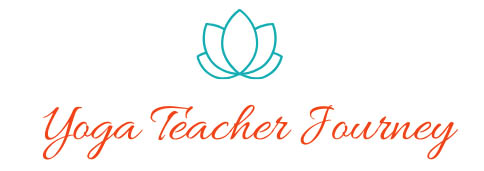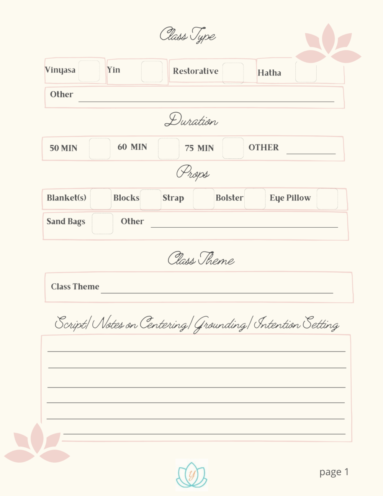You’re well on your way to teaching your first class, or maybe you’ve already started but still lack confidence in the cueing department. The first step is to know you’re not alone! All new teachers struggle with confidence in the beginning. It’s a scary thing to get up in front of a group of people and begin teaching something you’re brand new at doing. The good news is that you are heading in the right direction by seeking advice from seasoned yoga teachers.
Building on other teacher’s knowledge is one of the steps recommended in the 10 Step Guide to Start Teaching with Confidence Now (be sure to subscribe now – it’s free!). Feeling confident about giving cues to your students is half the battle in building your confidence – so you’ve come to the right place. Read on for 6 secrets of effective cueing (and don’t forget to read More Secrets of Effective Cueing next)!
Start with the foundation
We want to begin cueing from our foundation (the ground) and work up to begin aligning the pose. Therefore, beginning with having students “root the four corners of the feet down into the mat” might be an extremely effective cue in Tadasana (Mountain Pose) since you are starting with the foundation of the pose. Mostly, you will be cueing in this order: Action (root), body part (four corners of feet), direction (down). There are certainly exceptions to this, such as cueing to “soften the knees,” as one example.
Next, you will move up and focus on stabilization of the pose. So, you might say “lift up on your inner ankles and thighs” or “activate your abdominals” in order to have them engage and stabilize the pose. Finally, focus on elongating the pose by cueing length in the body. Here you might say something like “lift your ribs away from your low waist” or “lift the crown of your head towards the sky.”
Three at a time
This was great advice I received from a yoga teacher mentor that helped me tremendously! After I took my YTT 200, I had so much in my head that I felt like each time I brought students into a pose, I needed to tell them everything I knew all at once. It was overwhelming! Then my mentor said “three things. That’s all you need to say each time you cue.” Let’s say in Virabradrasana II (Warrior II) you say: 1.) “align your front heel with your back arch,” 2.) “stack front knee over ankle” and 3.) “front leg is tracking to the right.” Then next time – maybe on the other side – you might say 1.) press down equally into both feet and legs,” 2.) “shoulders over hips” 3.) “arms reaching out at shoulder height.” Of course there are many other cues for Warrior II that you could include if you come back into the pose again or chose to use the other cues in place of what I’ve listed above: “allow your shoulders to relax away from the ears,” steady gaze out over the front fingers,” or whatever other cues you want to use (there are so many).. “engage your abdominals,” “lift your heart,” “expand your stance,” press down into back pinky toe,” etc.
Speak the cues
Practice speaking the cues during your own practice. As you move your body parts, think of what actions are taking place with each transition and each alignment. Remember to go in this order: Action, body part, direction.
For example: Let’s begin in Balasana (Child’s Pose). “Send (action) your hips (body part) toward your heels (direction), or snuggle (action) your tailbone (body part) down toward your heels (direction) and bring (action) your forehead (body part) to the mat (direction).” Maybe you give additional cues and options for arms: “arms can stretch out in front of you or allow them to rest by your sides palms up.” There are always additional cues that can be added and changed up so as not to make things robotic and predictable.
Add breath to movement
When do you cue to “inhale” and when do you cue to “exhale?” This is a very common question and frankly sometimes I still get confused with these cues. Generally speaking, cue to inhale on an opening, a lengthening, and during an expanding action. “Inhale and lift your arms toward the sky.” Cue to exhale when contracting, shortening, and closing off. Think of Marjariasana /Bitilasana (Cat/Cow). You are inhaling while lifting your gaze opening your heart and expanding your collarbone, and on the exhale you are tucking your chin to your chest, drawing your navel in towards your spine.” So if you were to cue a hugging action with the arms, you might say “inhale and reach your arms out to the sides, exhale and wrap your arms around your body, giving yourself a hug.” Or, in a twist you might say “inhale and lengthen your spine, exhale and twist [your body] to the right.” Going into a forward fold, “inhale, lift your arms towards the sky, exhale hinge forward at the hips, swan dive your arms down toward the floor.”
Adopt cues that resonate with you
If something doesn’t feel right coming out of your lips, DON’T SAY IT! Change it so that it sounds and feels authentic coming from you. If “lifting your heart towards the sky” doesn’t feel right, maybe “lifting your sternum towards the ceiling” does. There are HUNDREDS of ways to cue students into the same action. “Lengthen your tailbone towards the floor” is the same as “root your buttocks towards your heels.” “Expand your collar bone” is the same as broaden your shoulders and lift your chest.” Again, play with these cues in your own body during your personal practice. Say and feel the cues as you speak them until they feel right.
Record yourself
Record what you say, play it back, and listen carefully as you practice following your own cues. By following your own cues you should be able to tell first-hand if they make sense. You may need to stop the recording from time to time and make notes on changes you’d like to incorporate. Then, start over and re-record yourself with the edited cues. Using this process, you will be able to tweak what doesn’t work, and refine what does work to improve and ultimately perfect your cueing skills. Over time, and as you teach repeatedly, this process will come naturally and you’ll find yourself instinctively adding in new cues that seem to flow better and dropping some old ones that no longer fit.
Here are some resources that may help you give effective cues:
More Secrets of Effective Cueing
Ground to Grow: Alignment Cues for Yoga Students and Teachers by Janie Montague
Yoga Toolbox for Teachers and Students, 3rd Edition by Joseph and Lilian Le Page
Teaching Yoga: Essential Foundations and Techniques by Mark Stephens





